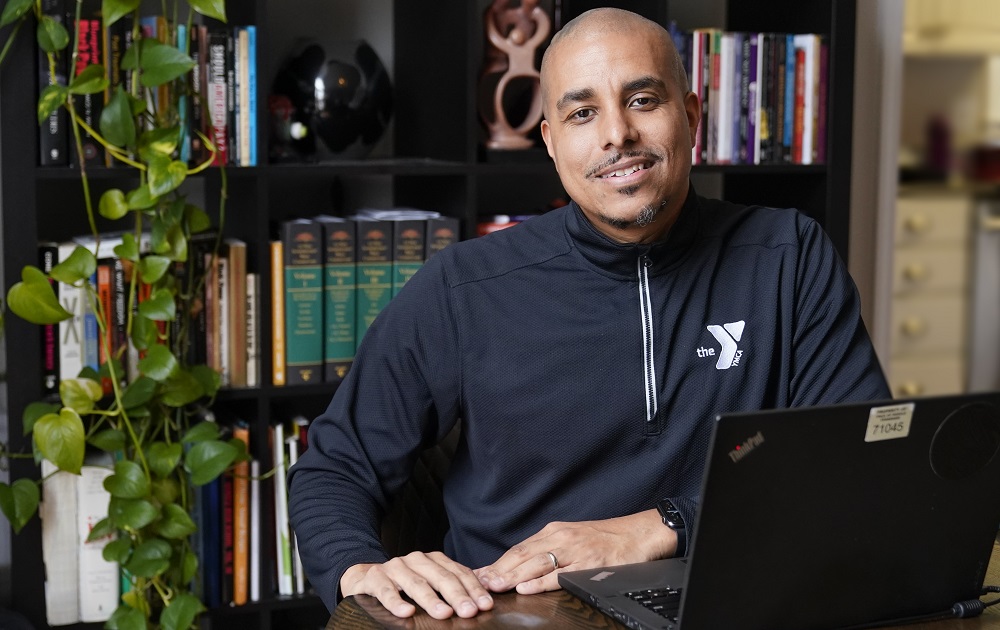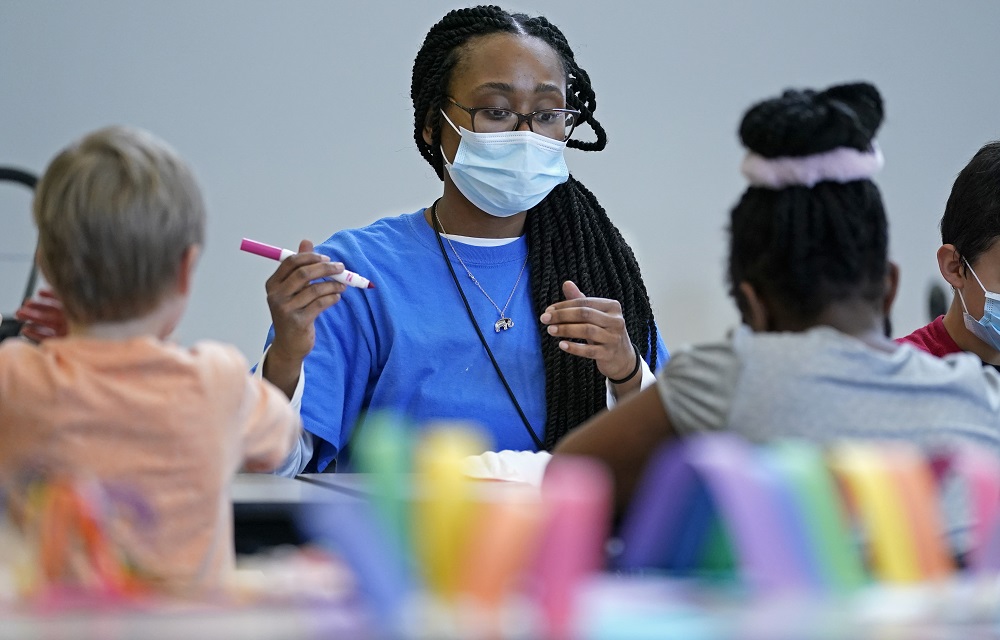The return to classrooms for the nation’s schoolchildren has not meant a return to work for many of their parents who, with workdays that outlast school days, are finding crucial afterschool programs in short supply.
 School-based providers list difficulties hiring and retaining staff as the biggest reasons they have not fully rebounded from pandemic shutdowns and they say they are as frustrated as the parents they are turning away.
School-based providers list difficulties hiring and retaining staff as the biggest reasons they have not fully rebounded from pandemic shutdowns and they say they are as frustrated as the parents they are turning away.
“We’re in a constant state of flux. We’ll hire one staffer and another will resign,” said Ester Buendia, assistant director for afterschool programs at Northside Independent School District in Texas. “We’ve just not been able to catch up this year.”
Before the pandemic, the San Antonio district’s afterschool program had 1,000 staff members serving more than 7,000 students at its roughly 100 elementary and middle schools. Today, there are less than half that number of employees supervising about 3,300 students. More than 1,100 students are on waiting lists for the program, called Learning Tree, which provides academic, recreational and social enrichment until 6:30 p.m. each school day.
It’s difficult to conclude how many parents of school-age children have been unable to resume working outside the home because of gaps in available care. But surveys point to a cycle of parents, mostly mothers, staying home for their children because they are unable to find afterschool programming, which then causes staffing shortages at such programs that rely heavily on women to run them.
“There’s no doubt really that these after-school programs — the lack of after-school programs at this stage — are limiting women in particular being able to reenter the workforce,” said Jen Rinehart, vice president for strategy and programming at the nonprofit Afterschool Alliance, which works to increase programming.
“If women don’t return to the workforce then we don’t have the staff we need for these afterschool opportunities, so it’s all very tangled together,” she said.
An Afterschool Alliance survey found an all-time high of 24.6 million children were unable to access a program at the end of 2021, though cost as well as availability was a barrier. Of more than 1,000 program providers surveyed, 54% had waiting lists, a significantly greater percentage than in the past.
Wells Fargo reported that labor shortages in child care, where women account for 96% of the workforce, are more acute than in other industries also struggling to find reliable employees. Employment was 12.4% below its pre-COVID-19 level at the beginning of March, leaving an estimated 460,000 families forced to make other arrangements, analysts concluded.
“Access to affordable child care has been shown time and again to boost labor force participation among mothers,” the report said.
A Census Bureau data poll in January found that 6% of parents with children 5-11 years old were not working because a child was not in school or day care. Data analyzed by Pew Research Center found that in the last quarter of 2021, 6% fewer jobs were held by parents of children age 5 to 12.
Erica Gonzalez of San Antonio secured afterschool spots for her second grade and sixth grade daughters after going into the school year on waiting lists. That allowed her to maintain her schedule at the nonprofit where she works and her husband, a teacher, to also coach.
Anticipating a crush for spots, Gonzalez had made sure to enroll her children for Learning Tree as quickly as possible and she kept in touch with their schools as each child inched up waiting lists.
“We were really just kind of hoping and praying that spots would open up for them and fortunately they did,” Gonzalez said.
Without the program, Gonzalez said she and her husband would have had to figure out how to get their daughters from their schools to her husband to wait for him to finish work.
“I would have had to probably change my schedule to go pick them up, drop them off and come all the way back to work,” she said. “We would have figured something out but it definitely would have been a challenge.”
Rico X said the school-based before- and afterschool programs he oversees at the YMCA of Middle Tennessee have had to cap enrollment because of staff shortages, leaving capacity at about 70% of what it was before the pandemic. One of its 105 sites used to have as many as 85 students; now it’s fewer than 60.
“In some of our waitlist sites we have some parents that are just in desperation,” he said, “and there’s not a whole lot we can really do unless there’s a spot that opens up.”
The YMCA, which sends staff into the schools to run the programs, is considering another pay raise in hopes of attracting more applicants, he said. The provider already raised the minimum pay for site directors from $13 to $16 an hour, and gave other employees a $2 an hour raise, to $13.
“For a good portion of our families, this is a lifeline for them, and it gives them the ability to be able to work but also have the peace of mind that their kids are in a safe and engaging environment. It’s 100% a lifeline,” X said.

Mark Humphrey/AP
Rico X poses at his home March 14, 2022, in Hermitage, Tenn. X, who oversees the before- and afterschool programs run by the YMCA of Middle Tennessee, says enrollment has had to be capped as parents return to work after the COVID pandemic because of staff shortages, leaving capacity at about 70% of what it was before the pandemic.
The Afterschool Alliance survey found that 71% of programs had taken action to attract and retain staff. The most common was raising salaries, in some cases using federal pandemic relief money in the form of child care stabilization grants. Some also have offered free child care for employees as well as signing bonuses or paid time off.
“We came into the pandemic with tremendous unmet demand for afterschool and summer programs and of course, like almost every other challenge out there, the pandemic only made that challenge worse,” Rinehart said.
Kasey Blackburn-Jiron, expanded learning coordinator for the West Contra Costa Unified School District in California, said providers the district relies on describe applicants skipping scheduled job interviews or even going through the hiring process only to vanish after landing the job, presumably to work at some place that pays more and demands less.
“My best guess is we don’t pay them enough money. We don’t offer them enough hours,” said Blackburn-Jiron, who said the program now serves far fewer than the 5,000 students enrolled before the pandemic.
“We’re asking asking these 17-, 18-, 19-dollar an hour people to work miracles,” she said. “Most of them don’t have bachelor’s degrees and yet we’re saying we want you to be an amazing youth development practitioner. You need to be able to teach and model social and emotional skills. You need to be able to teach 21st century skills, you need to be able to deal with young people who come from generations of trauma.”
She said state lawmakers recently increased funding for the program, which could lead to better pay, but the money will not get to programs until near the end of the school year.
“Working families need school-based afterschool programs, and we just haven’t been able to meet the need,” Blackburn-Jiron said, “and it’s heartbreaking.”






























